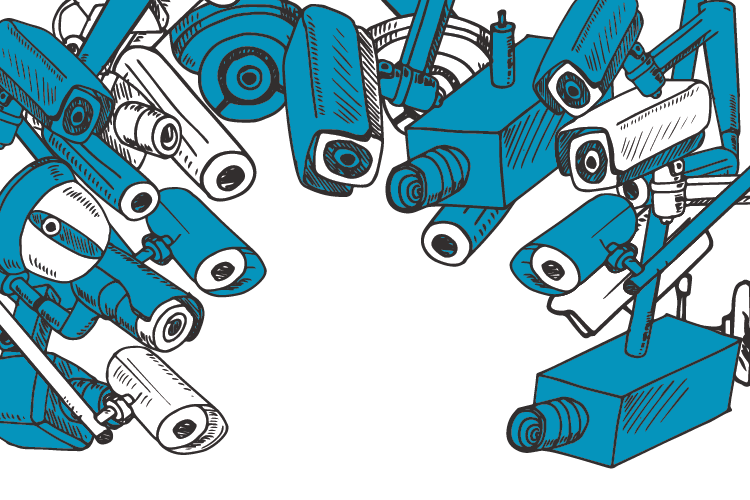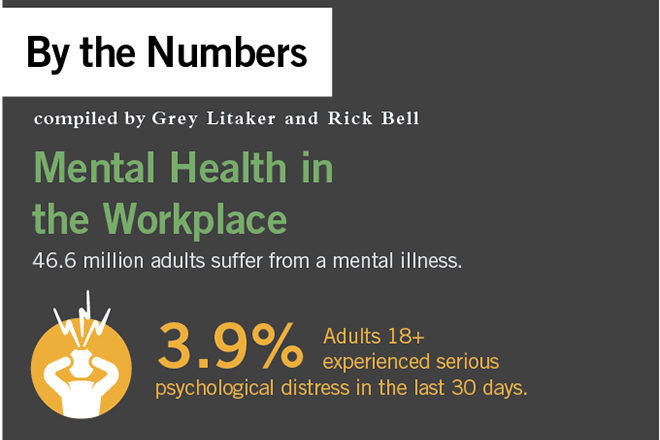Summary
-
Productivity in the US increased in the past year, which can indicate that businesses are adapting to disruptions following the largest decline experienced in 2022.
-
Employee engagement goes hand-in-hand with workplace productivity. Low engagement levels are expected to cost US$8.9 trillion or 9% of the global GDP.
- All-in-one payroll, HR, and workforce management software can help boost productivity through features like labor forecasting and communication platforms.
Productivity is a key measure of efficiency in any organization, but how it’s defined and measured varies widely. For hourly teams, productivity is often measured in real-time, like how efficiently shifts are managed, how well teams keep up with demand, and how businesses balance labor costs with performance.
Understanding the direction of workplace productivity is essential, especially as wages rise, new technologies emerge, and workforce expectations evolve. Trends in efficiency, labor costs, employee engagement, and automation have a direct impact on hourly teams. Staying informed about the latest developments in these areas helps businesses stay ahead and adapt to changing workforce dynamics.
Let’s take a look at how productivity is evolving on a national scale and what organizations can do to keep pace with these changes.
Productivity rates and its impact on quality of life
Generally speaking, productivity has seen some peaks and valleys over the years. And it has a direct correlation with quality of life.
During a TED talk, Yves Morieux, managing director and senior partner at Boston Consulting Group, explained how a 3% increase in productivity per year leads to a doubling of the standard of living for every subsequent generation. If that growth is reduced to 1%, it will take three generations to double the standard of living – leading to every generation being less well-off than their parents. Sound familiar?
“They will have less of everything: smaller roofs, or perhaps no roof at all, less access to education, to vitamins, to antibiotics, to vaccination – to everything. Think of all the problems that we’re facing at the moment. Chances are that they are rooted in the productivity crisis,” shares Yves Morieux.
In 2022, the Bureau of Labor Statistics (BLS) reported the sharpest decline in productivity since 1947. Nonfarm productivity landed at 7.5% in the first quarter of 2022, the lowest since the third quarter of 1947. This reflects pandemic-related disruptions, supply chain issues, and labor shortages.
The BLS defines labor productivity (or output per hour) as the division of “an index of real output by an index of hours worked.” They calculate the productivity of “all persons.” This includes employees, business owners, and unpaid family workers.
However, productivity has since recovered, and the BLS saw a 1.2% increase in labor productivity in nonfarm sectors. Productivity growth can indicate that businesses have adapted to automation, training, and better labor allocation.
Information from the BLS reflects economic trends, which can indicate changes in the labor market, wages, and overall productivity. It’s vital to stay abreast of these broader numbers and assess them with your own internal data so you can make better decisions and strategies for your team.
Hourly wage trends and impact on business costs
Hourly compensation continued to rise in the fourth quarter of 2024, with BLS reporting a 4.2% growth. Labor unit costs also grew by 3%.
Additionally, minimum wage increases took effect in over 20 states in 2025. Some states and cities implemented higher minimum wages at the start of the year, while others are scheduled to have increases later in the year.
As wages rise, businesses may face higher operational costs, which can lead to price adjustments for products and services. Labor forecasting becomes even more essential as employers balance staffing levels to maintain productivity without the risks of over- or understaffing.
Automation is also vital, especially for managers, in optimizing workforce management. Tools like time and attendance tracking, employee scheduling, performance management platforms, and payroll software can eliminate administrative burdens, allowing managers to focus on running a productive operation. With the right technology, managers can spend less time on routine tasks and more time analyzing data and making informed decisions to improve productivity.
Disengaged employees can cause lower productivity
Gallup’s State of the Global Workplace 2024 report shows that 62% of workers surveyed are disengaged, and low engagement is estimated to cost the global economy US$8.9 trillion or 9% of the global GDP.
The study also examined daily stress, finding that 41% of respondents experienced stress the previous day. While it’s important to note that the survey didn’t directly ask if the stress was experienced at work, consider that time spent in the workplace is also a significant factor in daily experiences and emotions.
Employee engagement is strongly linked to better business outcomes and employee retention. The study’s findings reiterate just how crucial it is for human resources professionals to prioritize employees’ mental health and maintain a good work environment to retain top talent, achieve higher productivity, and maintain healthier profits.
Automation and AI in hourly workforces
The adoption of AI and automation will continue in HR, and they’re expected to still play a major role in streamlining administrative processes such as hiring, onboarding, time tracking, labor forecasting, and payroll processing.
Also read: HR Trends for Hourly Workforces in 2025
However, while AI is often associated with productivity gains, its impact is not always straightforward. A study found that 77% of workers using AI disclosed that it added to their workload, presenting unexpected challenges in achieving the efficiency improvements employers anticipate. Furthermore, 47% of employees using AI admitted they were unsure how to meet their employers’ productivity expectations despite the technology’s implementation.
Clearly, technology is only as effective as its implementation. While AI has the potential to drive efficiency and profitability, its success depends on how well it integrates into workflows and supports employees rather than burdening them. Leadership plays a crucial role in ensuring AI adoption leads to practical, measurable improvements rather than becoming a source of frustration or inefficiency. Business leaders that introduce AI without a clear, well-structured strategy risk making work more complicated, which can result in lost productivity.
AI adoption should go beyond industry trends and buzzwords. It should be a strategic investment that delivers tangible benefits for both businesses and their employees.
Flexibility and job satisfaction beyond remote employees
For office workers, flexibility and work-life balance is typically to remote work or hybrid work arrangements, where they have greater control over their schedules and can work from home. However, for hourly teams, flexibility takes on a different meaning—one that is just as critical to job satisfaction and overall employee experience.
For hourly employees, flexibility isn’t about location but about having clear work hours in advance. Since their roles typically require them to be on-site, knowing their schedules ahead of time allows them to plan for personal commitments, reduce stress, and maintain a healthier work-life balance. This level of predictability on their work times keeps employees engaged, while minimizing issues like absenteeism and productivity losses.
If you’re managing an hourly workforce, ensuring employees receive their schedules well in advance is one of the most effective ways to enhance job satisfaction, improve employee experience, and maintain a more reliable and efficient team.
Potential shifts with workweek structures
There’s a current push for a 32-hour workweek, and its potential benefits for salaried, white-collar workers are clear. Many can complete the same amount of work in a shorter period. But what about businesses that rely on non-exempt, hourly employees?
For hourly workers, wages are directly tied to time worked, meaning a reduction from a 40-hour to a 32-hour schedule could significantly impact take-home pay unless accompanied by an increase in hourly wages. For businesses, especially those operating 24/7, transitioning to a shorter workweek presents operational challenges, from scheduling to maintaining productivity levels.
While it is still not in effect, businesses should monitor developments closely and consider how changes could affect operations and employee compensation.
Boost productivity with Workforce.com
Frontline teams looking to boost productivity turn to Workforce.com for solutions like scheduling, labor forecasting, employee communications, recruitment, performance management, and payroll. Having all of these functionalities housed in a single, powerful system helps simplify work models and drive better results. Here are some of the ways Workforce.com can help you do exactly that:
Automating administrative processes
Cut time spent filling shift schedules with Workforce.com’s scheduling system. Instead of manually building schedules with spreadsheets, managers can create and populate shifts in minutes and ensure employees only do work they are qualified for. This helps prevent burnout among your team and safeguards employee well-being.
Managers can also automatically approve and amend timesheets in bulk with Workforce.com’s time and attendance software. Once timesheets are finalized and approved, they can be exported to payroll, where wages, overtime, deductions, withholdings, and incentives are calculated automatically, ensuring accurate and timely pay for employees.
By eliminating manual processes, businesses can significantly reduce administrative workload, allowing teams to focus on higher-value activities to increase revenue and improve employee experience.
Optimize Scheduling with AI-Powered Labor Forecasting
Workforce.com’s labor forecasting system employs AI to predict staffing needs based on historical sales, economic trends, booked appointments, ongoing events, weather, and practically any metric that’s relevant to your operations.
Webinar: How to Forecast Your Schedule
With data-driven insights, you can determine exactly how many staff you need, where they need to be, and when they need to be there, all while avoiding the unnecessary costs of over or understaffing.
Improve team communication
Better communication leads to higher employee engagement and productivity. Workforce.com’s employee app fosters more open and transparent processes across your company.
Management and human resources can inform their team of upcoming shifts, scheduling conflicts, and shift changes instantly and across the board. While scheduling, managers can add important notes and reminders to shifts for specific employees. Important announcements can also be sent out by team or location.
Optimize manager duties
Workforce.com empowers managers with real-time insights into frontline operations. With time and attendance software, managers are instantly alerted when employees are running late or absent, approaching overtime, or missing scheduled breaks. In addition, managers can also offer up vacant shifts to qualified and available staff in case of no-shows or last-minute absences.
Workforce.com facilitates two-way shift feedback with staff members. Management can provide staff members with feedback on their performance per shift, and staff can also provide management with on-the-ground insights through feedback on staffing levels, communication, and teamwork.
Workforce.com has a proven track record of improving work productivity and employee satisfaction in various industries worldwide. Check out these client success stories or book a demo today to see the platform in action.




 Yet there are some
Yet there are some
 Sherman also informed the audience at MBGH’s event that the perception of mental health stigma may vary by socioeconomic status. There are two types of stigma — public stigma refers to discrimination or stereotyping from other people and private stigma refers to people internalizing stigma in a way that eats away at their self-worth. Low-wage workers often have a greater sense of personal stigma with behavioral health disorders, Sherman said.
Sherman also informed the audience at MBGH’s event that the perception of mental health stigma may vary by socioeconomic status. There are two types of stigma — public stigma refers to discrimination or stereotyping from other people and private stigma refers to people internalizing stigma in a way that eats away at their self-worth. Low-wage workers often have a greater sense of personal stigma with behavioral health disorders, Sherman said. 
